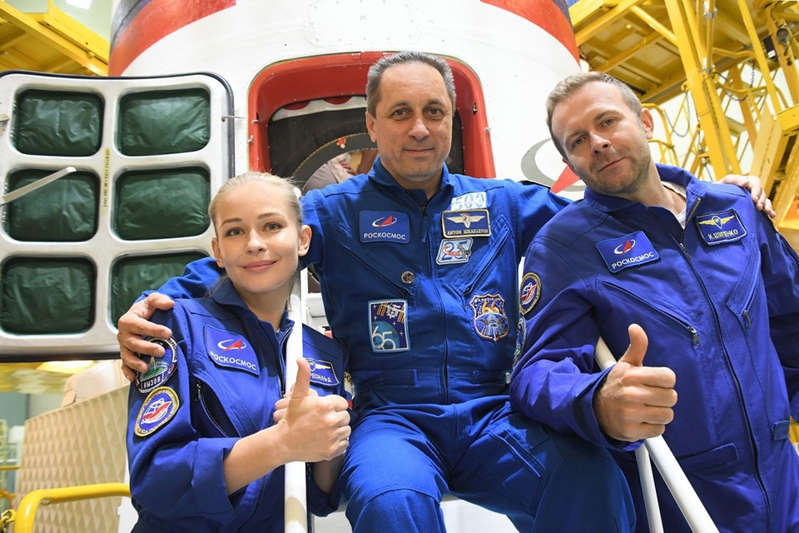
Yulia Peresild and Klim Shipenko have been around for so many all information tinsel is hung, that it is just right to start to understand: what is really going on?
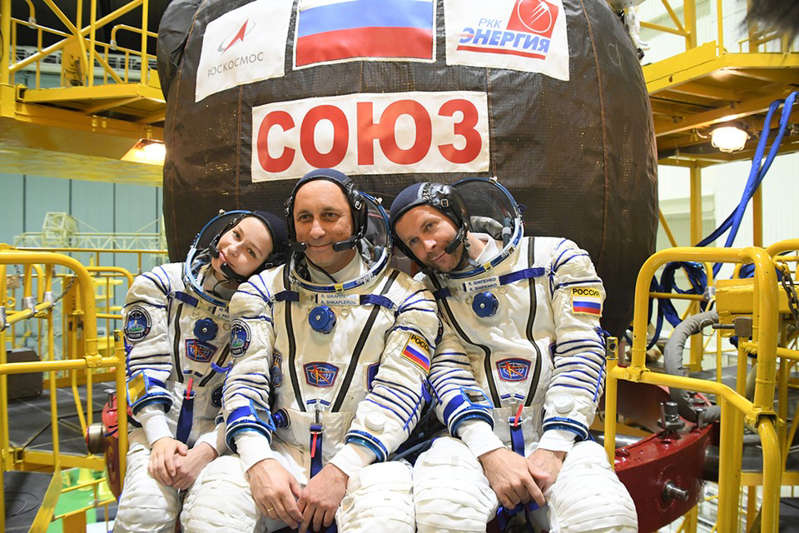
I'll start, perhaps, with a variety of (let's put it mildly) assumptions about the tasks of the project, the performance in orbit of the actress and director (who is also the operator). Quite a few of them have been expressed in both space and near-cinema chats.
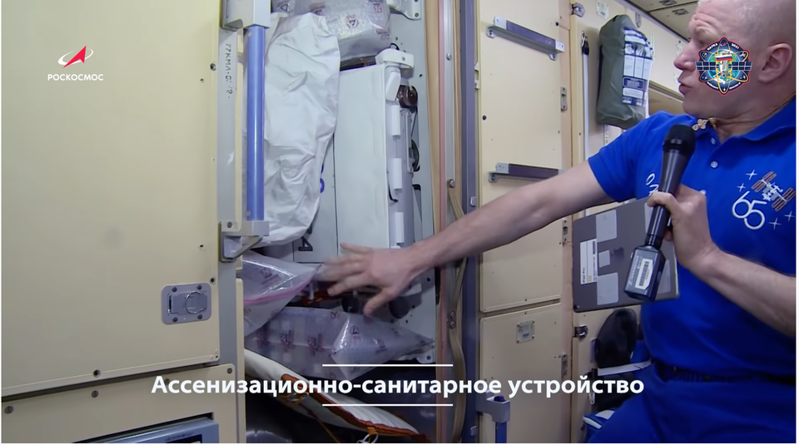
About the flight in the Soyuz MS-19
Will Yulia Peresild and Klim Shipenko trust their participation in the control of the Soyuz MS-19 spacecraft?
No, they won't. The commander of the spacecraft sits in the central seat, to his left is Flight Engineer 1, and to his right is Flight Engineer 2. When foreigners regularly flew on our ships, this third seat was usually assigned to them. It was assumed that during the flight to the orbital station, its owner would have a minimal set of tasks.
This time, the “left” passenger will have a minimum of tasks. Soyuz MS-19 was specially equipped with a portable control panel, from which the spacecraft commander Anton Shkaplerov (three long-term flights to the ISS, candidate of technical sciences) will issue commands, including those that are performed by a flight engineer in a normal flight.
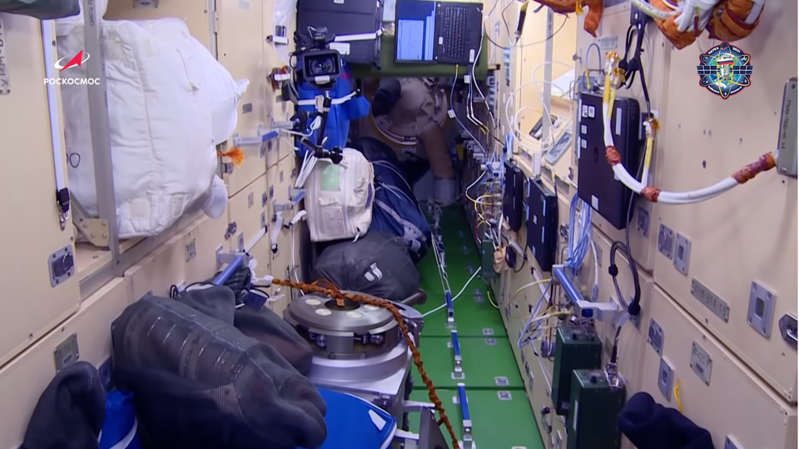
“I had to learn to fly the ship alone,” Shkaplerov said in an interview with the Russian Space magazine.
However, the actress and director will not sit back either. All work in the ship cannot be hung on one person. The seat of flight engineer-1 to the left of the commander will be occupied by Klim Shipenko, and flight engineer-2 to the right will be occupied by Yulia Peresild.
“Near Yulia’s chair there is a valve for supplying oxygen to the descent vehicle, and to the left of Klim — a valve for supplying oxygen to spacesuits in case of depressurization or fire, as well as air ventilation flaps,” the astronaut explains. At the command of Shkaplerov, Peresild and Shipenko will regulate these valves.
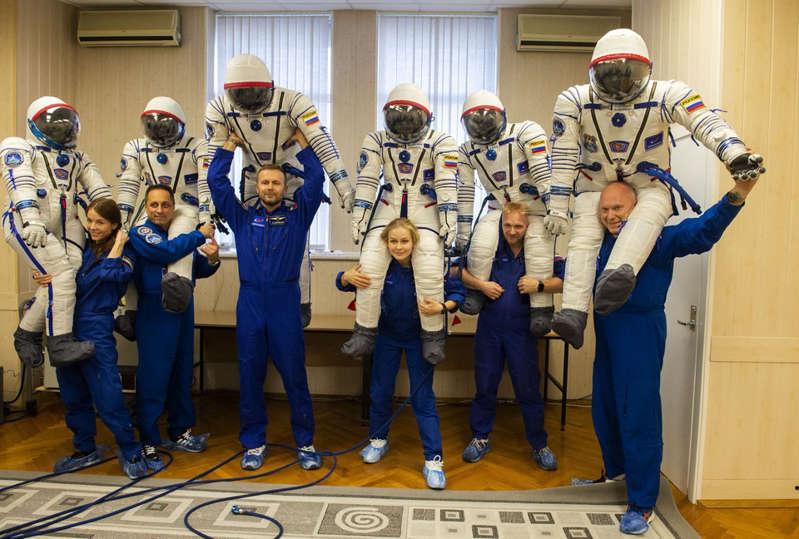
Space motion sickness
How can filmmakers be able to shoot from the first days, if usually the first 5-7 days for astronauts is an acute period of adaptation to weightlessness? Even trained astronauts feel sick, they suffer from headaches.
In fact, Peresild and Shipkenko will be able to start filming almost immediately after docking, when the ship's hatch opens and they transfer to the station. There is one secret about which, in general, it is not accepted to spread.
– And what do you think the Americans went into outer space on the shuttle on the second day of the flight? – the famous cosmonaut Gennady Padalka answered my question with a question (five space flights, the world record holder for staying in outer space – 878 days). – There is an injection that is given to the crew members so that they can work immediately after launching into orbit. How long did the shuttle fly? Five to seven days! It is impossible to wait for the crew to adapt to weightlessness.
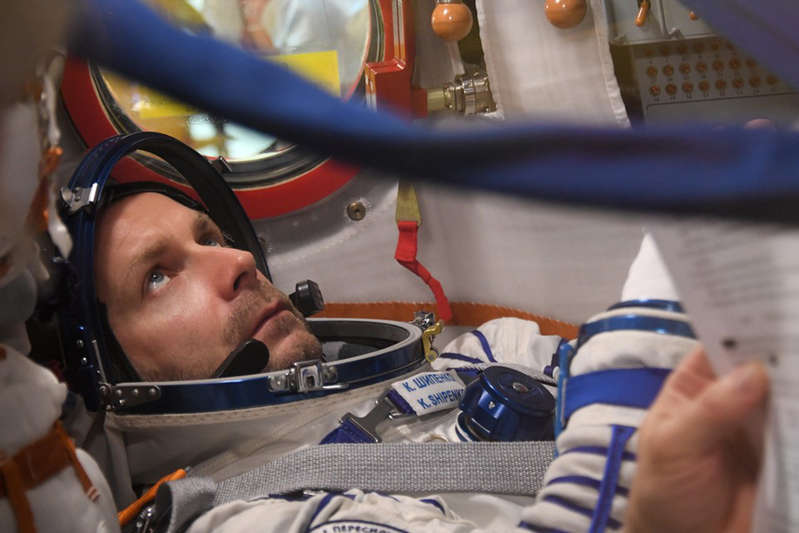
“We also had this drug in packs in the form of ampoules, candles and tablets,” explains the deputy director of the Institute of Biomedical Problems, cosmonaut Oleg Kotov (two long space flights, a doctor by first education). – It helps to cope with motion sickness and is effective when you need to relieve the symptoms of what we call space motion sickness.
Professional cosmonauts who go to the International Space Station try not to accept him, because “if you start, you will have to use the entire flight.” They try to endure the period of adaptation steadfastly, so that later they do not depend on drugs. Well, in the second flight (not to mention the third), the adaptation is faster. But if the flight is short – let me remind you that Shipenko and Peresild fly only for 12 days – you can help the body.
True, in recent years, ampoules with a miracle remedy have ceased to be sent on board – it is inconvenient to draw liquid into a syringe in zero gravity.
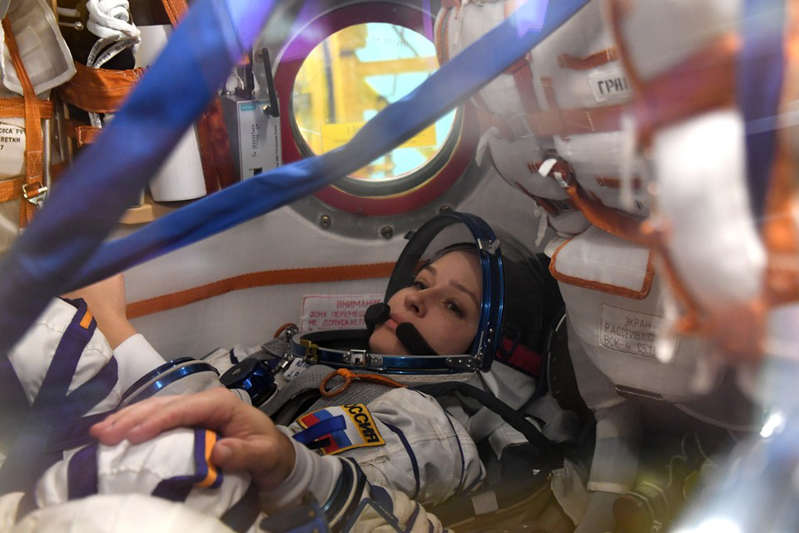
And one more thing: the medicine is often used as an antihistamine. It has a sedative effect. Took it – and I want to take a nap.
Whether Shipenko and Peresild will take the drug before the start – I cannot tell you. This is their personal, intimate affair. And then not everyone who flies into orbit experiences space sickness. There were trained conquerors of stars who came to the detachment with extensive experience in the sea, and in zero gravity they were very tormented. And there were those who did not even notice the new reality and from the first hours worked in orbit as if they were born in it. On earth, it is impossible to predict how the body will react to new conditions, despite the fact that research on this phenomenon has been conducted for a long time and corrosive. So it is quite possible that the actress and the director do not need the help of special drugs right at the start. Well, if it will stir up, they will accept and continue shooting.
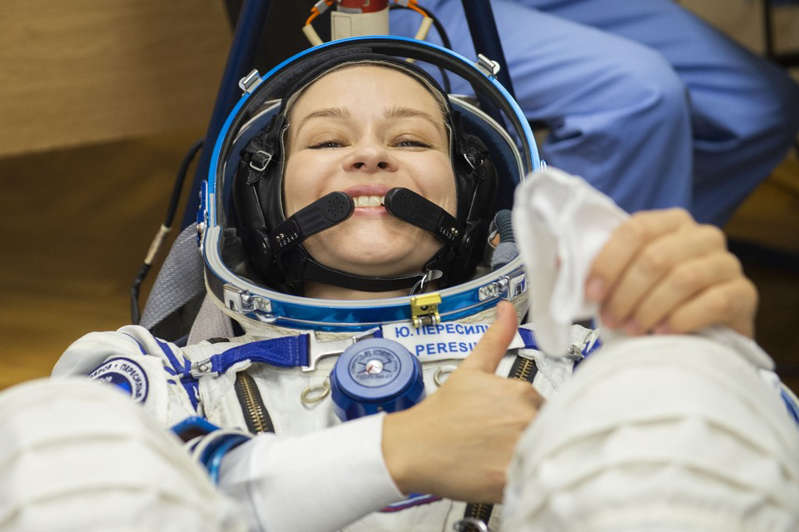
But here's what, alas, for sure – the faces of everyone in orbit are getting a little puffy. And this will be noticeably more for new arrivals than for those who have been working on the ISS for several months. This is not due to motion sickness, but to the fact that in orbit blood in a person is distributed differently. The heart does not need to exert so much effort to bring it to the feet and return it back. The blood rushes to the head. And this causes headaches and distorts the face somewhat.
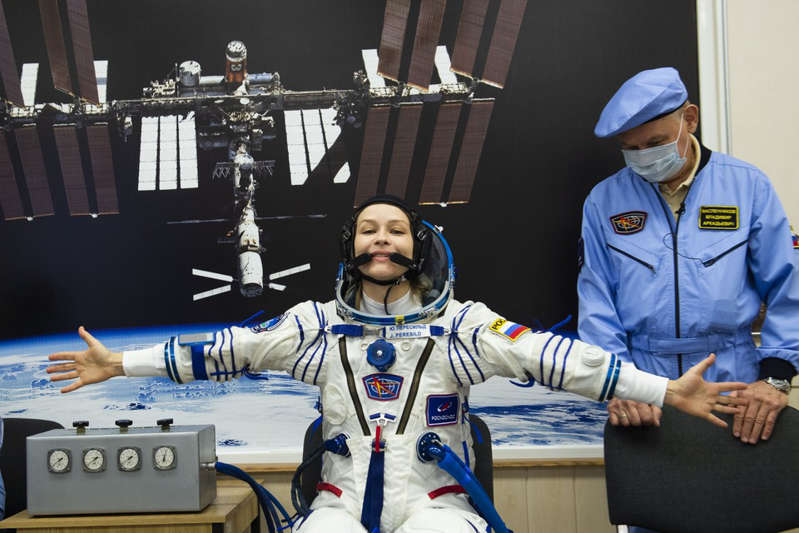
– I advised Julia to use special cuffs. They are worn on the thighs and facilitate the outflow of blood from the head. The headache goes away, the swelling subsides, – explains cosmonaut Yuri Gidzenko (three flights into space, including participation in the first crew that worked on the ISS). – But there is a problem: they cannot be used for more than two hours in a row.
About cabins
Where will the space flight participants sleep, because there are only three cabins in the Russian segment?
With the arrival of Soyuz MS-19, there will be five Russians on the ISS – Oleg Novitsky and Petr Dubrov have been working at the station since April 9 (they also brought American Mark Wande Hai). And now Shkaplerov, Peresild and Shipenko will be added to them. And there are, indeed, only three cabins (until recently there were only two – the third, not yet inhabited, is located in the new laboratory module “Science”).
There is not much room in the Russian segment of the ISS. With the docking of “Science”, the volume of premises that can be used has increased by a third. Now our cosmonauts have access to the Zvezda service module, the Zarya functional cargo module, the Nauka multifunctional laboratory module and two small modules Rassvet and Poisk. But still, there is not much room for five adults. Moreover, everyone will have plenty of work. And there is a chance that you will have to push in the same places. Oleg Novitsky will need to prepare the Soyuz MS-18 spacecraft for return to earth. On it on October 17, the mini-film group returns. Lay down everything that needs to be returned home, install the Peresild and Shipenko lodging chairs. Anton Shkaplerov will have to unload the Soyuz MS-19, remove the filmmakers' lodgments and install Dubrov and Wanda Haya.
Meanwhile, Shipenko will be shooting a movie nearby. Therefore, the time and place of filming, the scenes that are planned to be filmed in orbit, were carefully discussed on the ground. There should be no chaos in the modules.
About sleeping places. We agreed with the crew, which is now in orbit, as follows: Oleg Novitsky is giving up his cabin in the Zvezda module to Yulia Peresild. And he himself will spend the night in the living compartment of his Soyuz MS-18 spacecraft, stretching out his sleeping bag. Pyotr Dubrov (he flew for a year, so he still has six months to work in orbit) remains in his habitable cabin. Klim Shipenko will spend the night in a brand new cabin in the “Science” module (or in Novitsky's cabin, and Peresild will go to “Science” – everything will be finally decided in orbit). And Anton Shkaplerov, until the Soyuz MS-18 departs, will spend the night in a sleeping bag in the utility compartment of the Soyuz MS-19. Then he will take the second cabin in the Zvezda module.
By the way, an interesting fact: for the first time, the Russian crew will have four toilets at once, or, as they say in orbit, sewage systems. One is in the “Zvezda” and has been used for all the years of the ISS's existence. The second, brand new toilet came with “Science”. While its compartment is filled with cargo, but by the arrival of the guests, the room will be vacated by moving things into one of the small modules. Well, there are two spare toilets in the utility compartments of the Soyuz spacecraft. They are also allowed to be used if the sewage systems of the station are out of order.
About food
Will the film crew have a special menu in orbit?
No, it will not. These are cosmonauts who go on a long flight, are invited to the Institute of Biomedical Problems (IBMP) and, together with specialists, select a menu for them to taste (although often the taste in zero gravity in a closed room changes, and with it food addictions).
Peresild and Shipenko also came to the IBMP to see the famous space nutrition specialist Alexander Agureev. But only to get acquainted with the future diet. And it will be made based on the stocks of products that are now on board.
Meals will be three times a day. Food recommendations are made for each crew member. For example, on the first day of their stay on the ISS for breakfast, the actress and director are offered:
– Chopped pork with egg,
– Cottage cheese,
– Cookies “Russian”.
Dinner:
– Amateur vegetable caviar,
– Borsch with meat,
– Azu,
– “Borodino” bread.
Dinner:
– Goulash with mashed potatoes,
– Green bean salad,
– Ginger cookie.
Well, tea, coffee or cocoa. There are plenty of drinks bags on board. They are simply poured with boiling water.
However, no one forces you to eat exactly what is prescribed.
In addition, the crew will bring fresh oranges, apples and tomatoes aboard the Soyuz MS-19. They will also be added to the diet.
By the way, a special feast awaits the entire ISS crew – both ours and the Japanese Akihiko Hoshide, the Frenchman Tom Peske, the Americans Mark Vande Hai, Robert Kimbrow and Megan MacArthur on October 12. On this day, Oleg Novitsky will celebrate his fiftieth birthday.
Unlike a simulator …
What will surprise the filmmakers who fly to the ISS?
No, not weightlessness, not an unusual smell (it is specific on board, “artificial”, as experienced cosmonauts say – the room is not ventilated), not noisy fans.
I can assume that, like many newcomers, it will be surprising that the station does not look like a simulator on which astronauts prepare for flight. On the simulator in the Mission Control Center near Moscow, there are bare panels behind which the instruments are located, there is a table and the floor and ceiling are usually located (how else could it be on Earth?)
In orbit, not only are the concepts of floor / ceiling very relative, dozens of necessary things are fixed on the outside on the panels – from carcasses and camera lenses to wires, tools, tablets and equipment that is needed at hand. Moving from habit without touching one or another object is not easy.
And a recent innovation in the Zvezda module: the lighting has been replaced by LED lighting, which also changes color and brightness. It was made on the recommendation of the Institute of Biomedical Problems. According to the press secretary of the institute, a participant in several isolation experiments, Oleg Voloshin, with the help of adjustable lighting, it is possible to make a person's stay on board the station more comfortable.
The station orbits the Earth 16 times a day. So focus on the view behind the window in order to understand what time of day it will not work. But thanks to the changing light, it is possible to simulate morning (the lighting is brighter and approaches cold colors), day and evening (the lighting is dimmed).
Thus, it will be easier for filmmakers to get comfortable on board, to bring circadian rhythms in line with the schedule at the station.

